
Berjalan Kaki di Sisi Sungai Kamo
Erika ArceoJalan kaki di sepanjang Sungai Kamo: pengalaman budaya Kyoto menelusuri sisi sungai Kamogawa.

The Kamo River (鴨川), meaning “duck river,” is a prominent and scenic waterway flowing through Kyoto Prefecture, Japan. It has long been a cultural and natural landmark of the city, offering beautiful scenery and a peaceful atmosphere throughout the seasons. The riverbanks are especially popular with locals and tourists alike, who come to enjoy leisurely walks, picnics, and the seasonal beauty of cherry blossoms in spring or the cool breezes in fall.
In the warmer months, many riverside restaurants open special balconies known as noryo-yuka, allowing diners to enjoy their meals with a view of the flowing river. Walkways run alongside much of the river’s course, and several spots feature stepping stones that allow pedestrians to cross on foot.
Historically, the Kamo River has played a significant role in Kyoto’s development. When the Heian Capital (modern-day Kyoto) was established in the late 8th century, the river’s course was redirected to flow east of the new palace. Despite this effort, the river was prone to flooding, which became a recurring problem for the ancient capital. Emperor Shirakawa famously lamented that three things were beyond his control: the armed monks of Enryaku-ji, dice, and the waters of the Kamo River.
Today, the river is more regulated, with reinforced banks and drainage systems. Parallel to it runs the Takase River, a canal constructed by merchant Suminokura Ryoi in the early 17th century to facilitate transportation and reduce reliance on the unpredictable main river.
The Kamo River is also culturally significant, flowing past two important Shinto shrines—Kamigamo and Shimogamo—and through the sacred forest of Tadasu-no-mori that lies between them.
From Kyoto Station, the Kamo River is only a 15-20 minute walk away. Kyoto Station can be reached by the Tokaido Shinkansen (from Tokyo, Nagoya, and Osaka), as well as the Karasuma, JR Kyoto, Kintetsu Kyoto, and Nara lines.

Jalan kaki di sepanjang Sungai Kamo: pengalaman budaya Kyoto menelusuri sisi sungai Kamogawa.

Nikmati keindahan sakura di Kyoto saat musim semi tiba

Cerita bergambar tentang penangkap ikan di Sungai Kamo, Kyoto
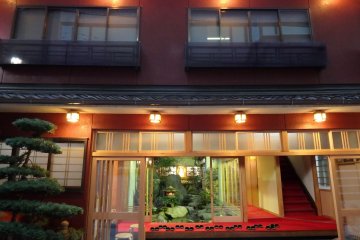
Tiga menit saja dengan berjalan kaki dari Kyoto Station, Nishikiro Ryokan adalah penginapan yang sederhana, bersih, dengan pemilik dan pengelola yang ramah. Sangat cocok untuk pelancong dengan budget terbatas yang mengininkan pengalaman otentik khas Jepang

Sebenarnya hostel ini tak memiliki suasana ruko tradisional di Kyoto. Tak ada gorden noren berwarna ala matcha/teh hijau atau tak tercium wangi segar lantai tatami, karakteristik yang lebih terdapat pada Roujiya Guesthouse atau ruangan di Hostel Hana. Namun Piece Hotel lebih memiliki sebuah atmosfer layaknya hostel, dengan warna minimalis dan tembok beton dengan galeri seni kontemporer, sedikit lebih mirip campuran Khaosan Hostel dan Hotel Anteroom

Hotel nyaman dengan fasilitas mandi spa di kamar dan sarapan gratis, berlokasi di pusat Kyoto

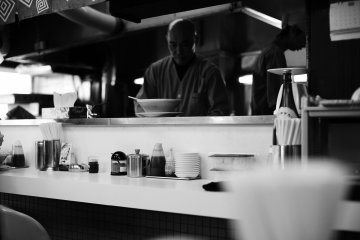
Dai-Ichi Asahi Ramen adalah ramen bergaya Kyoto terkenal yang berlokasi di dekat stasiun Kyoto. Restoran ini dikenal dengan shoyunya . Dikarenakan ketenarannya, bersiaplah untuk mengantri. Untuk harganya masih terjangkau dan semangkuk menu ramen andalan dipatok dengan harga 800 Yen.
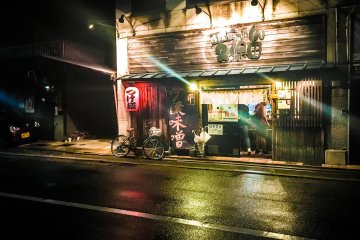
Setelah membaca banyak ulasan positif tentang Ginjo Ramen Kubota di Shimogyoko, Kyoto, saya memutuskan bahwa sudah waktunya untuk mencoba ramen pertama saya di restoran lokal dan otentik yang memiliki spesialisasi miso ramen ini.
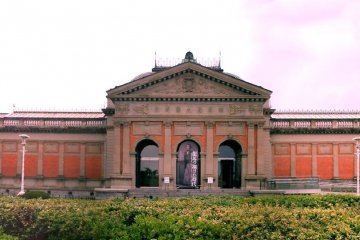
The Kyoto National Museum is one of the major art museums in Japan. Located in Kyoto's Higashiyama ward, the museum focuses on pre-modern Japanese and Asian art. [Wikipedia]

Sanjusangendo, officially called Rengeō-in, is a Buddhist temple of the Tendai sect located in the Higashiyama district of Kyoto. The temple’s main hall is famous for housing 1,001 statues of Senju Kannon (1,000-armed Kannon), the goddess of mercy. Taira no Kiyamori built the temple in 1164 as a retirement palace for Emperor Go-Shirakawa. Years later, the structure burned down but was reconstructed in 1266. The name Sanjusangendo translates to “a hall with 33 spaces between columns'' and refers to the number of intervals between the temple’s support columns. The focal point of the temple is its main hall. The impressive one-story building measures 120 meters long, making it the longest wooden structure in Japan. The main hall’s humble architectural style is characterized by its woodwork and slanted roof of wooden shingles. Despite its lack of outward ornateness, the hall’s sheer size commands respect from visitors and exudes a ubiquitous air of sacredness. Apart from the main hall, the grounds are also home to tranquil gardens, temple structures painted in brilliant vermillion, and an annual archery festival called Toshiya Matsuri, where thousands of participants come to test their bow skills and endurance. Witness the 1,001 Senju Kannon Statues Inside the main hall, walk among hundreds of golden, human-sized statues of Senju Kannon. The ornately carved statues stand in elegance with two of their 1,000 arms positioned in prayer and their serene faces deep in meditation. Atop their heads sprout additional smaller heads, which, along with goddess’ 1,000 arms, help her better fight human suffering. In the center of the hall sits a large statue of Kannon, who is positioned similarly in prayer with her multitude of arms fanned out behind her. The 12th and 13th-century statues are carved from Japanese cypress and lacquered with gold leaf, and the large Kannon statue, in particular, is considered a National Treasure. The 1,000 smaller statues are situated on both sides of the seated goddess in ten rows of 50. In front of the first row of Kannon statues, stand 28 additional sculptures of Buddhist guardian deities, many of whom, in contrast to the meditative statues, are poised in protective stances. The visual of hundreds of golden statues against the wooden hall’s muted walls is a truly awe-inspiring sight. Visitors cannot help but be comforted by the overwhelming sight of the serene goddess of mercy. Admission to Sanjusangendo costs 600 JPY for adults, 400 JPY for junior/senior high school students, and 300 JPY for children.
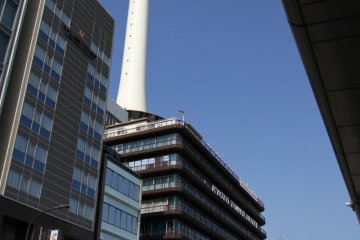
Kyoto Tower is an observation tower located in Kyoto, Japan. The steel tower is the tallest structure in Kyoto with its observation deck at 100 metres and its spire at 131 metres. The 800-ton tower stands atop a 9-story building, which houses a 3-star hotel and several stores. [Wikipedia]